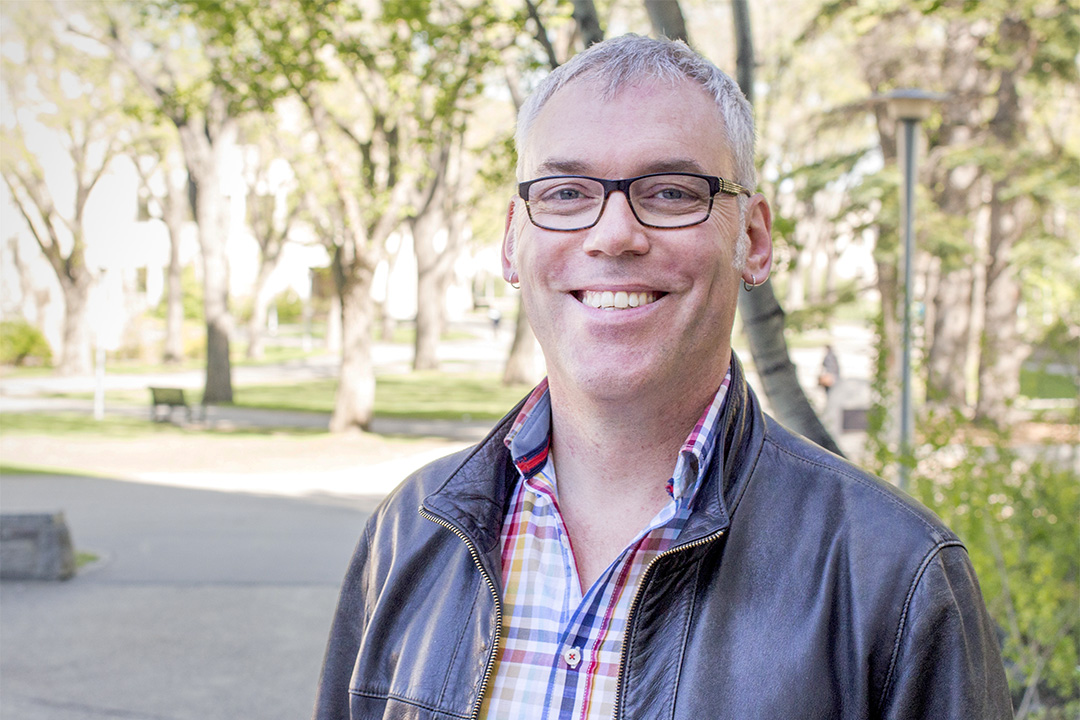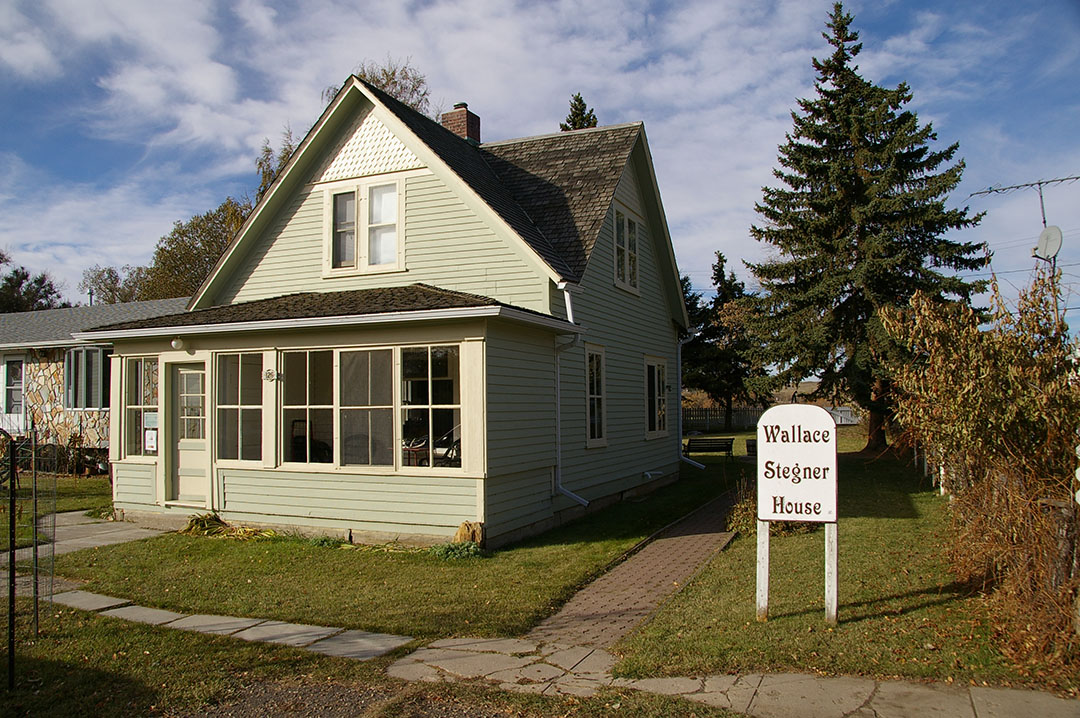
Home sweet home: USask professor launches new research program at historic house
The small southwestern Saskatchewan town of Eastend has proven to be the perfect launching pad for a University of Saskatchewan (USask) professor’s new research program, which is focused on heritage landscapes and bison reintroduction projects.
By Shannon BoklaschukDr. Clinton Westman (PhD), a professor in the College of Arts and Science’s Department of Archaeology and Anthropology, spent most of the month of October as a writer-in-residence at Wallace Stegner House after receiving a grant from the Eastend Arts Council. Open to published Canadian writers, the grant provides $500 and a month of free residency at the historical house, located on the banks of the Frenchman River in Eastend, overlooking the Cypress Hills.
“It’s really lovely,” said Westman.
The home was built by George Stegner in 1916-17. Stegner’s son, Wallace, who lived in the house from the ages of seven to 12, went on to become a Pulitzer Prize-winning author and founder of the Stanford School of Creative Writing. Wallace Stegner wrote about Eastend in his autobiographical book, Wolf Willow, which Westman teaches in one of his USask classes.
In 1990, the Eastend Arts Council bought the house and restored it. Heritage status was granted to the property, which now serves as a quiet retreat for writers and artists.
Westman described the Wallace Stegner House as beautiful, noting “it would fit right in” with some of the historic houses located in Saskatoon’s central areas. The home, which was visited by journalist Adrienne Clarkson while serving as Canada’s Governor General, is bright and features an office on the second floor that previously served as Wallace Stegner’s childhood bedroom, Westman said.

Westman, an environmental anthropologist, is known for interdisciplinary research that draws on environmental studies and cultural anthropology. Much of his work has focused on Indigenous groups in northern Alberta, particularly how they perceive oilsands development and the social and environmental impacts.
A study Westman co-authored with Dr. Tara Joly (PhD), published in the journal Human Ecology in February 2019, suggested a “crisis of confidence” about the industry has left the people most impacted by oilsands development feeling ill-informed and powerless.
Westman plans to continue to focus on the environment and Indigenous communities with his new research. He said Wallace Stegner House was ideally situated as a base to begin his fieldwork and to launch his new research program in Saskatchewan and Alberta.
Westman is interested in tourism and what he calls “heritage landscapes,” such as parks and other places with cultural resonance. He said there are a number of such landscapes under public management in the Eastend area, including Grasslands National Park and the Old Man on His Back Prairie and Heritage Conservation Area (OMB), where Westman will study bison reintroduction projects happening there. In 2003, the Nature Conservancy of Canada introduced a herd of genetically pure plains bison to OMB, which is managed as a working ranch. Plains bison were introduced to Grasslands National Park a couple of years later, in 2005, after a 120-year absence.
“Over time, I would like to look at the way the culture and history have been preserved,” said Westman, who also wants to examine how these landscapes “continue to matter in people’s present lives” and how that is being interpreted by governments, communities, conservation agencies, arts councils and artists.
To get started, Westman is learning more about bison biology and how the animals socialize. He plans to explore why and how decisions were made to put bison back on the land.
“What are the politics of it? How do local communities feel about it? How do visitors feel? Some of the questions that Grasslands National Park has asked me to raise with people are ‘Does this make you more likely to come, if you can see a bison?’ and things of that nature,” he said.

